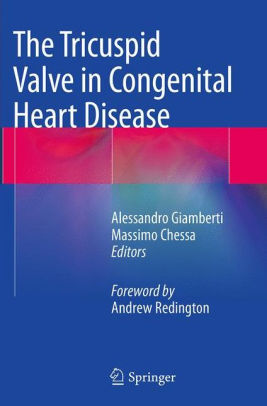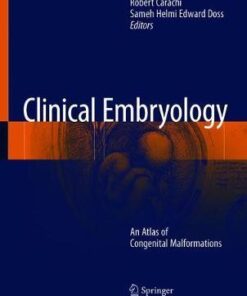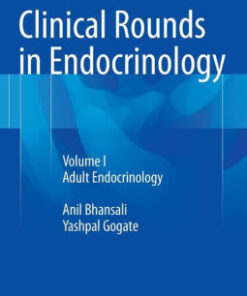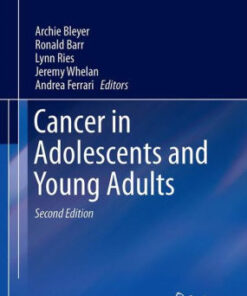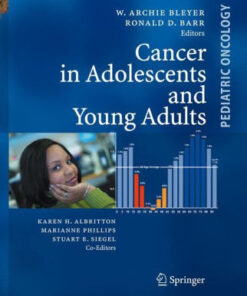(PDF) The Tricuspid Valve in Congenital Heart Disease By Alessandro Giamberti
$18.00
Download instantly The Tricuspid Valve in Congenital Heart Disease By Alessandro Giamberti, Massimo Chessa. It is ebook in PDF format.
ISBN-10: 8847053994 ISBN-13: 9788847053991
Preview
This is the PDF eBook version for The Tricuspid Valve in Congenital Heart Disease By Alessandro Giamberti, Massimo Chessa
Table of Contents
Foreword
Contents
1: Tricuspid Valve: Embryology and Anatomy
1.1 Embryology of the Tricuspid Valve
1.2 Anatomy of the Tricuspid Valve
1.2.1 Annulus
1.2.2 Leaflets
1.2.3 Papillary Muscles and Chordae Tendineae
References
2: Tricuspid Valve Dysplasia: From Foetus to Adult
2.1 Introduction
2.2 Morphologic Variations
2.3 Differentiation Between Dysplasia and Ebstein’s
2.4 Associations
2.5 Pathophysiology
2.5.1 Clinical Characteristics
2.5.1.1 Foetal Presentation
2.5.1.2 Neonatal Presentation
2.5.1.3 Adult Presentation
2.5.2 ECG and Chest X-Ray Features
2.5.3 Echo Features
2.6 Surgical Management of Tricuspid Valve Dysplasia
Conclusion
References
3: Genetics of Ebstein Anomaly
3.1 Introduction
3.2 Syndromic Ebstein Anomaly
3.2.1 Chromosomal Anomalies
3.2.2 Microchromosomal Anomalies
3.3 Monogenic Syndromes and Associations
3.4 Non-syndromic Ebstein Anomaly
3.5 Teratogens
3.6 Recurrence Risks and Genetic Counseling
Conclusions
References
4: Ebstein’s Anomaly in the Neonate
4.1 Pathologic Anatomy
4.2 Associated Anomalies
4.2.1 Cardiac Anomalies
4.2.2 Noncardiac Anomalies
4.3 Pathophysiology
4.4 Diagnostic Studies
4.5 Treatment
4.5.1 Medical
4.5.2 Surgical
4.5.2.1 Indications for Surgery
4.5.2.2 Evolution of Principles of Surgical Management
4.6 Our Approach to EA in the Neonate
4.6.1 Our Surgical Technique
4.6.2 Postoperative Care
4.6.3 Results of Our Approach
References
5: Ebstein Anomaly in Adolescents and Young Adults
5.1 Introduction
5.2 Anatomy
5.3 Symptoms
5.4 Diagnosis and Preoperative Evaluations
5.5 Surgical Techniques
5.6 Indications
5.7 General Consideration on Surgery
5.8 Repairing Techniques
5.8.1 Mobilization of the Anterior Leaflet and Longitudinal Plication of the Atrialized RV
5.9 The Cone Technique
5.10 Danielson Repair
5.11 The Atrialized RV
5.12 Atrial Septal Defect
5.13 Bidirectional Cavopulmonary Anastomosis and “One and a Half” Ventricle Repair
5.14 Tricuspid Valve Replacement
5.15 Results
5.15.1 Carpentier-Chauvaud
References
6: Ebstein’s Anomaly and Arrhythmia Management
6.1 Clinical Impact of Arrhythmias
6.2 Electrocardiography and Conduction Physiology
6.3 Accessory Pathways
6.3.1 Transcatheter Ablation
6.3.2 Surgical Ablation
6.4 Atrial Arrhythmias
6.4.1 Transcatheter Ablation
6.4.2 Surgical Ablation
6.5 Atrial Fibrillation
6.6 Sudden Death
6.7 Bradyarrhythmia
6.8 Antiarrhythmic Drug Therapy
Conclusions
References
7: The “Small” Tricuspid Valve
7.1 Introduction
7.2 The Small TV in the Arrangement of PA with IVS
7.2.1 Tricuspid Valve
7.2.2 Right Ventricle
7.2.3 Coronary Arteries
7.3 Treatment Options for a Small TV with the Arrangement of PA with IVS
7.4 Treatment Algorithms
7.4.1 Primary Treatment in the Neonatal Period
7.4.1.1 Mild TV Hypoplasia
7.4.1.2 Moderate TV Hypoplasia
7.4.1.3 Severe TV Hypoplasia
7.4.1.4 RV-Dependent Coronary Artery Circulation
7.4.2 Secondary Treatment Aiming to Separate Pulmonary and Systemic Circulation
7.4.3 Ratio Between TV and Mitral Valve Diameter
7.5 The Small Tricuspid Valve in Unbalanced Complete Atrioventricular Septal Defect (CAVSD)
References
8: The “Systemic” Tricuspid Valve: The Tricuspid Valve in the Systemic Circulation Following A
8.1 Introduction
8.2 Historical Background and Results of the Atrial Switch Operation
8.2.1 Atrial Switch Operation for Transposition of the Great Arteries
8.2.2 Long-Term Outcome After the Atrial Switch Operation for Transposition of the Great Arteries
8.2.3 Disadvantages of the Right Ventricle and the Tricuspid Valve in the Systemic Circulation
8.2.4 Tricuspid Valve Regurgitation After Atrial Switch Operation in TGA Patients
8.2.4.1 Intrinsic Malformation of the Tricuspid Valve
8.2.4.2 Mechanical Injury to the Tricuspid Valve During Previous Operations and Interventions
8.2.4.3 Dysfunction of the Right Ventricle in the Systemic Circulation
8.3 Surgical Treatment of Tricuspid Valve Regurgitation Following an Atrial Switch Operation in T
8.3.1 Indication and Surgical Options for the Failing Right Ventricle and Tricuspid Regurgitation
8.3.2 Tricuspid Valve Repair or Replacement
8.3.3 Staged Conversion to the Arterial Switch Operation
8.3.4 Pulmonary Artery Banding as Destination or Bridge-to-?Transplant Therapy
8.3.5 Cardiac Resynchronization as Destination or Bridge-to-?Transplant Therapy
8.3.6 Heart Transplantation
Conclusion
References
9: The “Systemic” Tricuspid Valve: The Tricuspid Valve in Congenitally Corrected Transposition
9.1 Introduction
9.2 Natural History of CCTGA
9.3 Causes of Systemic Right Ventricular Failure
9.4 Causes of Systemic Tricuspid Valve Regurgitation
9.4.1 Anatomical Abnormalities of the Tricuspid Leaflets
9.4.2 Geometric Changes of the Right Ventricle
9.4.3 Annular Dilatation
9.4.4 Changing Loading Conditions
9.4.5 Conductance Abnormalities
9.4.6 Increase in Tricuspid Valve Regurgitation After Conventional Surgery
9.5 Intervention to Correct for CCTGA or to Prevent Development of Tricuspid Valve Regurgitatio
9.5.1 Isolated CCTGA
9.5.2 Complex Cardiopathy
9.6 Surgery for Tricuspid Valve Regurgitation
References
10: The “Systemic” Tricuspid Valve in Hypoplastic Left Heart Syndrome
10.1 Aetiology of Tricuspid Regurgitation in HLHS
10.1.1 Functional
10.1.2 Structural
10.1.3 Myocardial Shape and Function
10.1.4 Suboptimal Systemic Outflow Reconstruction
10.2 Assessing and Imaging the Tricuspid Valve
10.3 When to Surgically Repair Tricuspid Regurgitation
10.3.1 Tricuspid Insufficiency Before Stage I
10.3.2 Tricuspid Insufficiency After Stage I
10.3.3 Tricuspid Insufficiency After Stage II
10.3.4 Tricuspid Insufficiency Beyond Stage III
10.4 Surgical Strategies
10.4.1 De Vega Annuloplasty
10.4.2 Partial Annuloplasty and Commissuroplasty
10.4.3 Edge-to-Edge Repair
10.4.4 Cleft Closure and Patch Augmentation
10.4.5 Chordal Interventions
10.4.6 Tricuspid Valve Replacement
10.5 Outcome
Conclusion
References
11: Tricuspid Valve Injury After Surgical/Transcatheter Procedures
11.1 Surgical Injury
11.2 Transcatheter Injury
References
12: The Tricuspid Valve in Adults with Congenital Heart Disease
References
13: The Rheumatic Tricuspid Valve
13.1 Introduction
13.2 Pathology
13.3 Indications for Surgery
13.4 Surgical Management
13.4.1 Tricuspid Valve Stenosis
13.4.2 Tricuspid Valve Regurgitation
13.5 Results
References
14: Surgical Techniques of Tricuspid Valve Repair in Patients Without Ebstein Malformation
14.1 Tricuspid Valve Repair in Patients with Tetralogy of Fallot
14.2 Tricuspid Valve Repair in Double-Orifice Tricuspid Valve
14.3 Tricuspid Valve Repair in Patients with Uhl’s Anomaly
14.4 Tricuspid Valve (Right Atrioventricular Valve) Repair in Patients with AV Canal
14.5 Tricuspid Valve Repair in Single Ventricles
14.6 Straddling Tricuspid Valve
14.7 Marfan Disease
14.8 Hypoplastic Tricuspid Valve Annulus
14.9 Tricuspid Insufficiency Owing to Pacemaker and Defibrillator Leads
References
15: Surgical Tricuspid Valve Replacement
15.1 Introduction
15.2 Surgical Procedure
15.3 Results
15.4 Follow-Up
15.5 Considerations
References
16: Transcatheter Treatment of Tricuspid Valve
Conclusions
References
17: The Postoperative Treatment of Tricuspid Valve Surgery
17.1 Monitoring of the Patient for Tricuspid Valve Surgery
17.1.1 Electrocardiography (ECG)
17.1.2 Systemic Arterial Pressure
17.1.3 Central Venous Pressure (CVP)
17.1.4 Pulmonary Artery Pressure (PAP)
17.1.5 Left Atrial Pressure (LAP)
17.1.6 Cardiac Output
17.1.7 Echocardiography
17.1.8 Central Venous Oxygen Saturation (ScVO 2)
17.1.9 Arterial Blood Lactates
17.1.10 End Tidal CO 2 (ETCO 2)
17.1.11 Pulse Oximetry
17.1.12 Near-Infrared Spectroscopy (NIRS)
17.2 Right Ventricular Failure
17.2.1 Primary RV Dysfunction
17.2.2 RV and the Afterload
17.2.3 Specific Patterns in Ebstein Anomaly
17.3 Prevention and Treatment of the RV Failure
17.3.1 Mechanical Ventilation
17.3.2 Fluid Administration
17.3.3 Inotropic Drugs
17.3.4 Pulmonary Vascular Resistance Modulation
17.3.5 Mechanical Support of the RV
References
